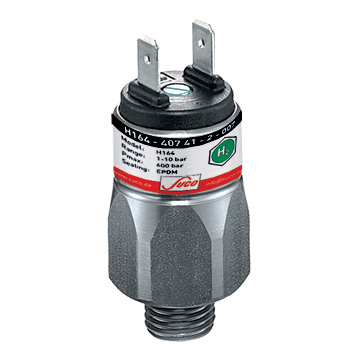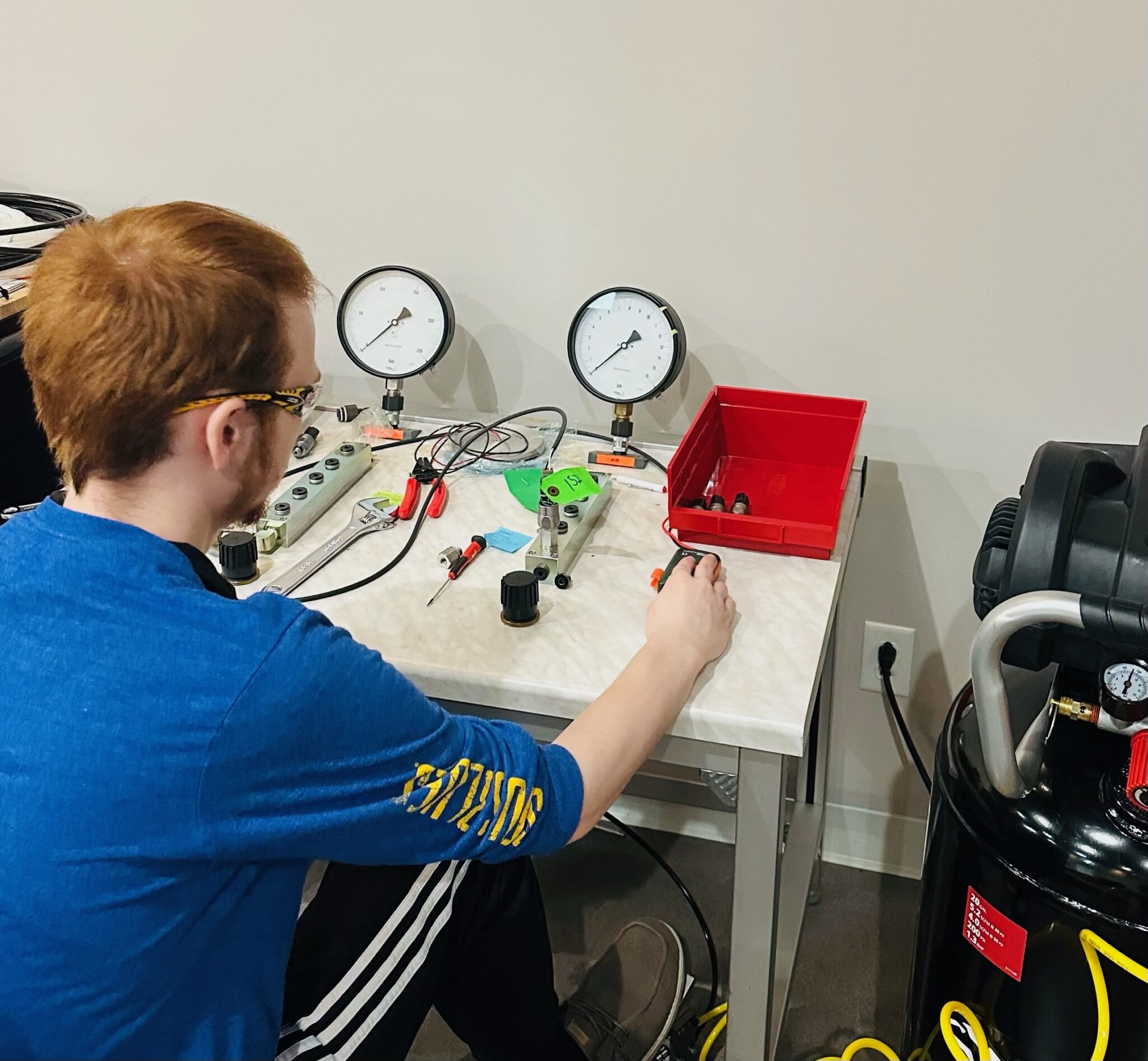Proper installation of pressure switches is critical for reliable system performance and preventing costly failures. With 60-80% of early failures caused by installation errors, downtime can cost up to $100,000 per hour in manufacturing facilities. In this comprehensive guide, we cover the best practices for mounting, electrical connections, calibration, and troubleshooting to optimize the performance and longevity of all types of pressure switches. Whether you’re working with HVAC systems or advanced Silicon-on-Sapphire sensors, mastering these techniques will protect your investment and ensure maximum system reliability
Installation Success Statistics:
- 90% of pressure switch failures preventable through proper installation
- 67% longer service life achieved with correct mounting practices
- 85% reduction in false alarms through proper calibration
- $2-5 million annual savings typical for large industrial facilities
📋 Step 1: Pre-Installation Assessment and Planning
Application Requirements Verification
Before beginning pressure switch installation, verify that the selected switch matches your application requirements. Improper switch selection causes 40% of installation problems and can lead to premature failure or unsafe operation.
Critical Verification Points:
- Pressure range: Operating pressure should be 60-70% of switch range
- Temperature compatibility: Verify ambient and media temperatures
- Media compatibility: Confirm materials resist process fluids
- Electrical requirements: Match voltage, current, and output types
- Environmental protection: IP rating adequate for conditions
- Certifications: ATEX, UL, CSA as required for application
If you haven’t already selected the optimal switch type, consult our comprehensive guide to types of pressure switches for detailed selection criteria and technology comparisons.
Site Assessment and Environmental Conditions
Evaluate installation site conditions that impact pressure switch installation success:
| Environmental Factor | Impact on Installation | Mitigation Strategy |
|---|---|---|
| Vibration | Causes mechanical wear and false switching | Vibration dampeners, solid-state switches |
| Temperature Extremes | Affects accuracy and component life | Temperature-rated components, insulation |
| Corrosive Atmosphere | Degrades housing and connections | 316SS housings, conformal coatings |
| Electrical Noise | Interferes with electronic switch operation | EMI shielding, proper grounding |
| Moisture/Water | Causes electrical failures and corrosion | IP65+ enclosures, drainage provisions |
Tools and Materials Preparation
- Torque wrench: Calibrated for connection sizes
- Thread sealant: PTFE tape or pipe dope (media compatible)
- Digital multimeter: For electrical verification
- Pressure calibrator: For set point verification
- Basic hand tools: Wrenches, screwdrivers, wire strippers
- Safety equipment: Lockout/tagout devices, PPE
🔧 Step 2: Mechanical Installation Procedures
 Mounting Orientation and Location
Mounting Orientation and Location
Proper mounting orientation prevents 45% of mechanical switch failures. The sensing element orientation significantly affects performance, especially for diaphragm and Bourdon tube switches covered in our comprehensive pressure switch types guide.
Optimal Mounting Practices:
Vertical Orientation (Preferred): Mount with sensing element in vertical position to minimize effects of process fluid weight and debris accumulation.
Accessibility Requirements: Provide minimum 6″ clearance around switch for maintenance access, adjustment, and calibration activities.
Vibration Isolation: Mount switches away from pumps, compressors, and other vibration sources. Use vibration dampeners when isolation distance insufficient.
Drainage Considerations: Install switches above process taps when possible to prevent fluid accumulation and ensure proper drainage.
Thread Connection Best Practices
Thread connection integrity prevents leaks that cause 25% of pressure switch installation failures. Proper technique balances sealing requirements with component protection.
| Connection Size | Torque Range | Thread Sealant | Installation Notes |
|---|---|---|---|
| 1/8″ NPT | 8-15 ft-lbs | PTFE tape (2-3 wraps) | Light torque, check frequently |
| 1/4″ NPT | 15-25 ft-lbs | PTFE tape (3-4 wraps) | Standard industrial connection |
| 1/2″ NPT | 25-35 ft-lbs | Thread compound or tape | Monitor for housing stress |
| 3/4″ NPT | 35-50 ft-lbs | Thread compound recommended | Use backup wrench on body |
Pressure Snubber Installation
Install pressure snubbers for pulsating applications to prevent damage from pressure spikes and extend switch life. This is particularly important for mechanical pressure switch types that are more sensitive to rapid pressure changes.
Snubber Selection Criteria:
- Pulsation frequency: >10 cycles/second requires snubbing
- Pressure amplitude: Spikes >25% of operating pressure
- Snubber orifice: 0.013″ to 0.040″ depending on application
- Response time: Balance damping with required switching speed
Environmental Protection Installation
Implement appropriate environmental protection based on installation location and exposure conditions:
- Outdoor Installations: Minimum IP65 rating with UV-resistant materials
- Wash-down Areas: IP67 or IP69K rating for high-pressure cleaning
- Corrosive Environments: 316 stainless steel housings with PTFE cable glands
- Explosive Atmospheres: ATEX-certified explosion-proof or intrinsically safe designs
For complex installations or when premium performance is critical, contact our technical experts for personalized installation support and training services – Email: sales@sucoesi.com
⚡ Step 3: Electrical Connection Procedures
 Wiring Standards and Safety
Wiring Standards and Safety
Electrical connections must comply with local codes and manufacturer specifications. Poor wiring causes 30% of electronic pressure switch failures and creates safety hazards.
⚠️ Electrical Safety: Always implement lockout/tagout procedures, verify zero energy state, and use appropriate PPE when making electrical connections. Follow ISA standards for industrial control wiring.
Cable Selection and Routing
Proper cable selection prevents electrical failures and ensures long-term reliability:
| Application | Cable Type | Minimum Rating | Special Considerations |
|---|---|---|---|
| Indoor Control | THWN-2 | 600V, 90°C | Conduit protection required |
| Outdoor Installation | XHHW-2 | 600V, 90°C | UV and moisture resistant |
| Flexible Connection | SO/SOW | 600V, oil resistant | Strain relief required |
| High Temperature | PTFE insulated | 600V, 200°C | Special termination methods |
Grounding and EMI Protection
Proper grounding prevents interference and ensures safe operation, particularly critical for electronic switches including Silicon-on-Sapphire sensors that may be more sensitive to electrical noise.
Grounding Best Practices:
Equipment Grounding: Connect switch housing to equipment grounding conductor using minimum 12 AWG wire.
Shield Grounding: Ground cable shields at one end only (typically at panel) to prevent ground loops.
EMI Protection: Use shielded cables in electrically noisy environments, maintain 12″ minimum separation from power cables, and install ferrite cores if required.
Connection Verification Procedures
Verify all electrical connections before energizing the system:
Pre-Energization Checklist:
✅ Continuity test all conductors
✅ Insulation resistance test (>10 MΩ to ground)
✅ Verify proper polarity for DC circuits
✅ Check termination tightness (7-10 in-lbs typical)
✅ Confirm cable strain relief installation
✅ Test ground fault circuit integrity
 📊 Step 4: Calibration and Testing Procedures
📊 Step 4: Calibration and Testing Procedures
Initial Calibration Verification
Proper calibration ensures accurate switching and prevents false alarms. Calibration procedures vary significantly between mechanical and electronic pressure switch types.
Mechanical Switch Calibration
Mechanical switches typically require field adjustment of set points using integral adjustment mechanisms:
Mechanical Switch Calibration Steps:
- Baseline Testing: Apply known pressure using calibrated test equipment and record actual switching points.
- Set Point Adjustment: Use adjustment screw or spring mechanism to achieve desired switching pressure. Make small incremental adjustments.
- Hysteresis Verification: Test both rising and falling pressure switching points. Typical hysteresis is 2-10% of set point.
- Repeatability Testing: Cycle pressure multiple times to verify consistent switching behavior.
Electronic Switch Configuration
Electronic switches often provide programmable set points and advanced features requiring software configuration:
| Parameter | Typical Range | Configuration Method | Verification Method |
|---|---|---|---|
| Set Point 1 | 10-90% of range | Software or pushbuttons | Applied pressure test |
| Set Point 2 | 10-90% of range | Software or pushbuttons | Applied pressure test |
| Hysteresis | 0.5-5% of span | Software configuration | Rising/falling pressure test |
| Time Delay | 0-600 seconds | Software configuration | Stopwatch verification |
Performance Documentation
Document baseline performance for future reference and maintenance planning:
Required Documentation:
- As-found conditions: Initial switching points and accuracy
- As-left conditions: Final calibrated set points
- Test equipment used: Model numbers and calibration dates
- Environmental conditions: Temperature, humidity during testing
- Deviation reports: Any out-of-specification conditions found
- Configuration parameters: Software settings for electronic switches
For complex installations or when premium performance is critical, contact our technical experts for personalized installation support and training services – Email: sales@sucoesi.com
🔍 Step 5: System Integration and Commissioning
Control System Integration
Integrate pressure switches with control systems following industry standards and best practices:
Integration Considerations:
- Input scaling: Configure PLC/DCS inputs for switch contact ratings
- Alarm logic: Implement appropriate alarm delays and acknowledgment
- Interlock testing: Verify safety shutdown functions operate correctly
- HMI configuration: Provide clear indication of switch status and alarms
Operational Testing
Perform comprehensive operational testing to verify proper system response:
- Functional Testing: Verify switching action at designed pressures
- Alarm Testing: Confirm proper alarm generation and display
- Interlock Testing: Test safety shutdowns and equipment protection
- Communication Testing: Verify digital communication (if applicable)
- Documentation Review: Complete installation and commissioning records
🛠️ Troubleshooting Common Installation Issues
Mechanical Installation Problems
| Symptom | Probable Cause | Solution |
|---|---|---|
| Process leaks at connection | Insufficient torque or thread sealant | Retighten to specification, replace sealant |
| Erratic switching behavior | Vibration or pulsating pressure | Install vibration dampener or snubber |
| Premature contact wear | Excessive electrical load or arcing | Add contact protection or reduce load |
| Slow response time | Restricted pressure sensing port | Clear obstruction, install larger fittings |
Electrical Installation Problems
| Symptom | Probable Cause | Solution |
|---|---|---|
| No electrical output | Power supply failure or wiring error | Verify supply voltage and connections |
| Intermittent operation | Loose connections or EMI interference | Tighten connections, add EMI filtering |
| False switching signals | Electrical noise or ground loops | Improve shielding and grounding |
| Calibration drift | Temperature effects or component aging | Recalibrate or replace switch |
Maintenance Planning and Lifecycle Management
Preventive Maintenance Schedules
Establish maintenance intervals based on switch type and application severity. Proper maintenance extends service life and prevents unexpected failures:
| Switch Type | Visual Inspection | Functional Test | Calibration Check | Replacement Interval |
|---|---|---|---|---|
| Mechanical (Standard) | 3 months | 6 months | 12 months | 5-7 years |
| Electronic (Standard) | 6 months | 12 months | 24 months | 10-15 years |
| Silicon-on-Sapphire | 12 months | 24 months | 36-60 months | 15+ years |
Performance Monitoring
Implement monitoring programs to track switch performance and predict maintenance needs:
Key Performance Indicators:
- Switching accuracy: Track drift over time
- Response time consistency: Monitor for degradation
- False alarm frequency: Identify problematic installations
- Calibration stability: Extend intervals when possible
- Failure rate tracking: Identify systematic issues
📋 Frequently Asked Questions
What torque should I use for pressure switch installation?
Typical torque values range from 15-25 ft-lbs for 1/4″ NPT connections, 25-35 ft-lbs for 1/2″ NPT, and 35-50 ft-lbs for 3/4″ NPT. Always consult manufacturer specifications as materials and designs vary significantly. For Silicon-on-Sapphire switches, follow precise torque specifications to prevent damage to sensitive components.
How do I prevent pressure switch installation damage from overtightening?
Use proper thread sealant rather than excessive torque, apply torque gradually while monitoring for leaks, and never exceed manufacturer specifications. Overtightening can damage threads, crack housings, or stress sensing elements. Use calibrated torque wrenches and proper backup wrenches on larger connections.
What environmental protection is required for outdoor pressure switch installations?
Outdoor installations require minimum IP65 protection with corrosion-resistant materials like 316 stainless steel. Consider temperature extremes, UV exposure, and potential water ingress when selecting enclosure ratings. Harsh environments may require IP67 or specialized coatings.
How often should I calibrate pressure switches after installation?
Calibration frequency depends on switch type and application criticality. Mechanical switches typically need annual calibration, electronic switches every 2-3 years, and premium technologies like Silicon-on-Sapphire may extend to 3-5 year intervals. Critical safety applications require more frequent verification.
What’s the most common cause of pressure switch installation failure?
Improper mounting orientation and insufficient vibration protection cause 45% of mechanical switch failures. For electronic switches, inadequate environmental protection and poor electrical connections are primary failure modes. Following manufacturer specifications prevents 90% of installation-related problems.
🚀 Expert Installation Support
 Proper pressure switch installation requires attention to detail, adherence to proven practices, and understanding of both mechanical and electrical systems. While this guide provides comprehensive coverage of installation best practices, complex applications may benefit from expert consultation.
Proper pressure switch installation requires attention to detail, adherence to proven practices, and understanding of both mechanical and electrical systems. While this guide provides comprehensive coverage of installation best practices, complex applications may benefit from expert consultation.
SUCO ESI North America provides complete installation support including site surveys, custom mounting solutions, commissioning services, and training programs. Our field service engineers have decades of experience with all types of pressure switches, from basic mechanical designs to advanced Silicon-on-Sapphire technology.
Professional Installation Services:
- Pre-installation site assessment and planning
- Custom mounting and protection solutions
- Complete electrical integration and commissioning
- Performance verification and documentation
- Maintenance program development and training
For complex installations or when premium performance is critical, contact our technical experts for personalized installation support and training services – Email: sales@sucoesi.com
Related Resources:
- Types of Pressure Switches: Complete Guide for Industrial and Commercial Use – Comprehensive technology overview and selection guidance
- Silicon-on-Sapphire Technology – Advanced sensor technology for extreme environments
- Hydrogen Pressure Sensors – Specialized solutions for hydrogen applications
- Technical datasheets and installation manuals
- Video installation guides and troubleshooting resources



